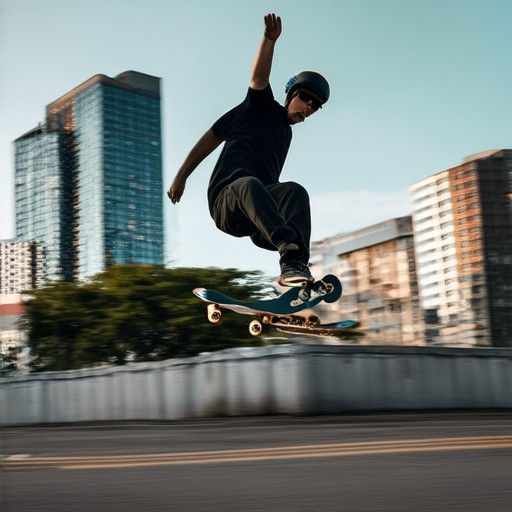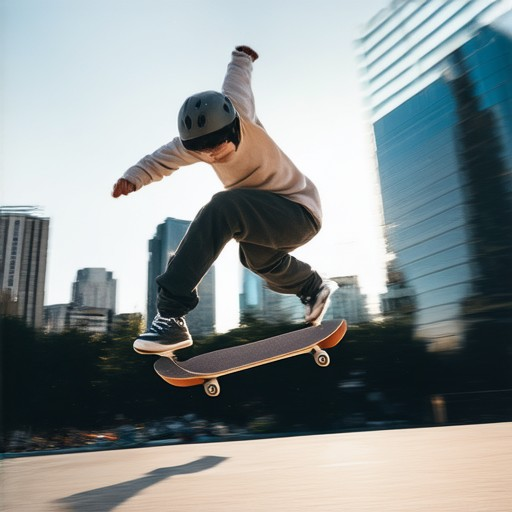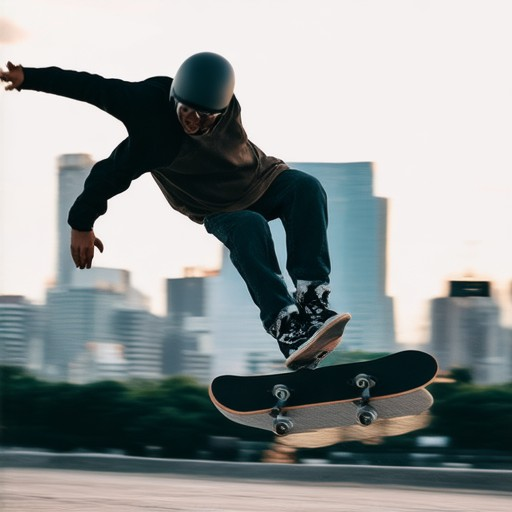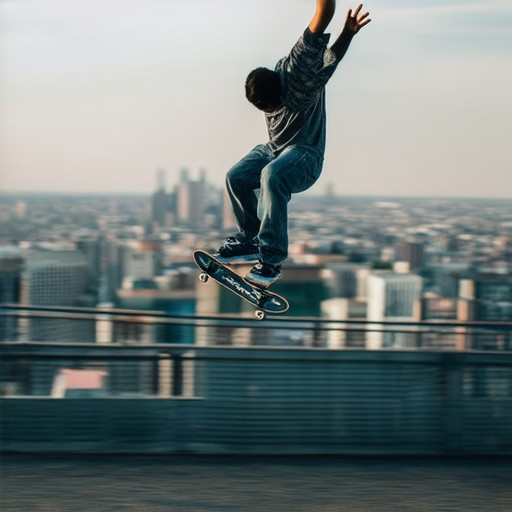Skateboarding has long been celebrated as more than just a recreational activity—it’s a dynamic, ever-evolving sport that continues to captivate enthusiasts worldwide. Over the years, it has transitioned from a rebellious street culture to a globally recognized competitive discipline, even making its way onto the Olympic stage. Whether you’re a seasoned pro or just starting out, skateboarding offers a unique blend of creativity, physical challenge, and camaraderie that sets it apart from traditional sports. Its appeal lies in its ability to combine adrenaline-pumping moves with precision and artistry, making it a thrilling spectacle for spectators and participants alike. This article delves into the multifaceted nature of skateboarding, exploring its history, its cultural significance, and its growing recognition as a legitimate sport. From its roots in Southern California to its current status as a competitive endeavor, skateboarding represents a perfect fusion of rebellion, skill, and determination. Join us as we uncover the reasons why skateboarding is not just a hobby but a sport that demands respect and celebration.

Is Skateboarding Considered an Extreme Sport?
Skateboarding is often debated whether it falls under the category of extreme sports. While it shares similarities with other extreme sports like snowboarding and BMX biking, it has unique characteristics that set it apart. Let’s explore why skateboarding is frequently labeled as an extreme activity.
Defining Extreme Sports
Extreme sports are typically defined by their high degree of risk, physical intensity, and adrenaline-pumping maneuvers. These activities often involve specialized equipment and require participants to push their limits. Skateboarding inherently fits many of these criteria due to its fast-paced nature and the risk involved in performing tricks.
Skateboarding as a Unique Extreme Sport
Skateboarding combines elements of surfing, gymnastics, and motorsports, making it a versatile and dynamic extreme sport. It involves riding a board while performing tricks, which can include ollies, grindings, and air tricks. The combination of creativity and physical skill required makes it appealing to many enthusiasts.
Historical Context
Skateboarding has evolved significantly since its inception in the late 1940s. Early skateboarders in Southern California developed tricks and styles that laid the foundation for modern skateboarding. Over time, it has grown into a global phenomenon with its own culture, competitions, and iconic figures.
Competitive Aspect
While skateboarding is often seen as a recreational activity, it also has a competitive side. Events like the X Games and Dew Tour showcase skateboarders pushing the boundaries of what’s possible, further cementing its status as an extreme sport. Competitions often feature high-flying tricks and daring maneuvers that demand precision and courage.
Risk and Safety
One of the hallmarks of extreme sports is the inherent risk involved. Skateboarding is no exception, as participants may encounter hazards like uneven surfaces, obstacles, and potential falls. However, skilled skateboarders understand the risks and take precautions to minimize injuries while maximizing their experience.
Cultural Impact
Skateboarding has had a profound impact on youth culture and urban environments. Its vibrant community, diverse subcultures, and artistic expression contribute to its appeal. Many cities around the world have embraced skateboarding as a way to promote fitness and urban exploration.
Conclusion
Whether you consider skateboarding an extreme sport or not, there’s no denying its unique blend of creativity, physical challenge, and cultural significance. Its continued evolution and growing popularity ensure that it remains a prominent figure in the world of extreme sports.
- High Risk: Participants engage in dangerous maneuvers that require skill and awareness.
- Physical Demand: Skateboarding demands strength, agility, and endurance.
- Creative Expression: The ability to perform complex tricks showcases artistic talent.
- Community and Culture: Skateboarding has fostered a strong global community with its own unique style.
Kickflip Boards is proud to support the skateboarding community and provide resources for skateboard enthusiasts of all levels. Explore our website for tips, guides, and the latest trends in skateboarding.
Why Skateboarding is the Best Sport
Skateboarding combines physical fitness, creativity, and social interaction in a unique way that makes it stand out as one of the most enjoyable and rewarding sports. Here’s why skateboarding is often considered the best sport:
Physical Fitness
Skateboarding is a full-body workout that targets multiple muscle groups simultaneously. It improves cardiovascular health, builds endurance, and enhances strength in the legs, core, and upper body. Regular skateboarding sessions can burn significant calories while improving balance and coordination.
Creativity and Skill Development
Skateboarding is not just about speed; it’s about style and creativity. Skaters can experiment with different tricks, ollies, grinds, and combos, which require precision, timing, and spatial awareness. This constant challenge helps develop problem-solving skills and fosters a growth mindset.
Social Interaction
While skateboarding can be a solo activity, it often brings people together. Many skaters enjoy hanging out at skateparks, sharing tricks, and encouraging each other. The shared passion for skateboarding creates a strong sense of community and camaraderie.
Mental Health Benefits
Skateboarding can reduce stress and anxiety by providing a focal point for concentration. The repetitive nature of the activity allows skaters to zone out and escape daily pressures, offering a form of mindfulness.
Versatility
Skateboarding offers a wide range of activities, from street skating and vertigo to downhill and park skating. This versatility means there’s something for everyone, whether you prefer a fast-paced, technical ride or a laid-back, creative session.
Cultural Significance
Skateboarding has a rich history and a vibrant subculture that includes its own fashion, music, and slang. Engaging with this culture can make skateboarding feel like more than just a sport—it’s a lifestyle choice that reflects personal identity and values.
Safety and Fall Prevention
Skateboarding requires learning proper technique to minimize injuries. Falls are inevitable, but practicing safe landing techniques helps reduce the risk of harm. This skill transferable to other sports and daily activities.
Skateboarding truly is a unique and dynamic sport that offers something for everyone. Its combination of physical exertion, mental challenge, and creative expression makes it a standout choice for those seeking an active and fulfilling lifestyle.

Is Skateboarding a High-Risk Sport?
Skateboarding is considered a high-risk sport due to its inherent dangers, though it remains popular among many individuals. The risks involve potential injuries from falls, collisions, and overuse, making it essential for participants to take precautions.
The frequency of injuries associated with skateboarding is significant. According to recent studies, approximately 70,000 injuries requiring emergency department visits occur annually in the United States alone.
Risks Associated with Skateboarding
- Falls: One of the primary risks is falling while performing tricks or maneuvers, which can lead to head injuries, fractures, or sprains.
- Collisions: Skateboarders may collide with pedestrians, vehicles, or other skateboarders, leading to traumatic injuries.
- Overuse Injuries: Repetitive motions, such as ollies or grind tricks, can cause muscle strains, ligament tears, and joint pain.
- Weather Conditions: Poor weather conditions, such as wet surfaces, can increase the risk of slips and falls.
Prevention Tips
- Wear Protective Gear: Helmets, knee pads, and wrist guards are critical for reducing the risk of injuries.
- Choose Safe Locations: Skate in designated skate parks or safe public areas to minimize collision risks.
- Learn Proper Techniques: Mastering tricks and maneuvers can reduce the likelihood of falls and collisions.
- Stay Aware of Surroundings: Always be cautious of your surroundings, especially in busy areas.
Safety Resources
Kickflip Boards offers comprehensive guides on skateboard safety, including tips on choosing the right gear and maintaining proper technique. Visit our Safety Guide for more information.
Competitor Products
When it comes to safety equipment, several reputable brands offer high-quality products designed to protect skateboarders. Some notable options include:
- Bones Bearings: Known for their durability and performance, Bones bearings are a favorite among skateboarders.
- Vans Shoes: Vans offers skate-specific shoes designed for better grip and control.
- Sector 9 Trucks: These trucks are known for their stability and responsiveness.
By taking these precautions and understanding the risks, skateboarders can enjoy the sport safely while minimizing the chances of injury. Always prioritize safety when engaging in skateboarding activities.

What Do You Call Someone Who Skateboards?
A person who skateboards is called a skateboarder . This term is widely recognized and encompasses individuals who engage in the sport or activity of skateboarding. The term is neutral and inclusive, reflecting the diverse community associated with skateboarding culture.
What Are the Two Types of Skateboarders?
Skateboarders can generally be categorized into two distinct groups based on their preferred style and environment. These categories reflect not just their technique but also their cultural and social contexts.
1. Vert Skaters
- Definition : Vert skaters focus on vertical surfaces, such as empty swimming pools, skateparks with Vert ramps, or other man-made structures. This style originated with the “Z-Boys” and their innovative approach to the sport.
- Characteristics :
- They perform tricks on vertical surfaces, mimicking the motion of surfing.
- Tricks often involve high-speed maneuvers and precise timing.
- This style emphasizes creativity and adaptability to unique challenges.
- Community : Vert skaters tend to form tight-knit communities, often gathering at specific spots known for their Vert features.
2. Street Skaters
- Definition : Street skaters prefer real-world urban environments, such as sidewalks, curbs, stairs, and handrails. Their style is more about navigating and adapting to the unpredictable surfaces found in cityscapes.
- Characteristics :
- Tricks involve grinding on edges, sliding across surfaces, and performing flip tricks.
- Street skating often incorporates a mix of technical skill and street smarts.
- This style is deeply rooted in skatepark cultures and shared public spaces.
- Community : Street skaters may be more visible in urban areas, often interacting with the public and sharing their passion for skateboarding.
Both types of skateboarders contribute uniquely to the vibrant world of skateboarding, showcasing its diversity and appeal. Whether you’re drawn to the adrenaline-pumping heights of Vert or the raw, gritty streets, there’s a place for everyone in this dynamic community.
Kickflip Boards offers comprehensive guides for both vert skating and street skating , helping riders of all levels master their chosen style.

Is Skateboarding a Good Workout?
Skateboarding is an excellent form of exercise that offers numerous physical and mental benefits. It provides a comprehensive full-body workout, engaging multiple muscle groups simultaneously. Here’s why skateboarding makes for a great workout:
- Full-Body Engagement: Skateboarding works various muscle groups, including the legs, core, arms, and shoulders. It improves strength, flexibility, and balance.
- Cardiovascular Fitness: Combining physical movement with the need for speed and stamina, skateboarding boosts heart rate and overall cardiovascular health.
- Balance and Coordination: Navigating the board requires precise control and quick reflexes, enhancing your sense of balance and coordination.
- Core Strengthening: The constant shifting weight and movements demand strong core muscles, contributing to better posture and reduced risk of injuries.
- Mental Health Benefits: Skateboarding promotes creativity and problem-solving skills, offering a therapeutic outlet that can reduce stress and improve mood.
If you’re new to skateboarding, here are some tips to get started:
- Start Slow: Begin with basic moves like standing still and gradually progress to more complex tricks.
- Wear Protective Gear: Helmets, knee pads, and wrist guards are essential for safety.
- Practice Safety: Skate in open, safe areas and be aware of your surroundings.
- Watch Tutorials: Check out resources from Kickflip Boards to master the basics and advanced techniques.
Skateboarding is not just a hobby; it’s a versatile and effective way to stay active and healthy. Whether you’re looking to improve your fitness or simply have fun, skateboarding offers something for everyone. Explore more tips and guides on Kickflip Boards to enhance your skills and enjoyment of the sport.




0 Comments